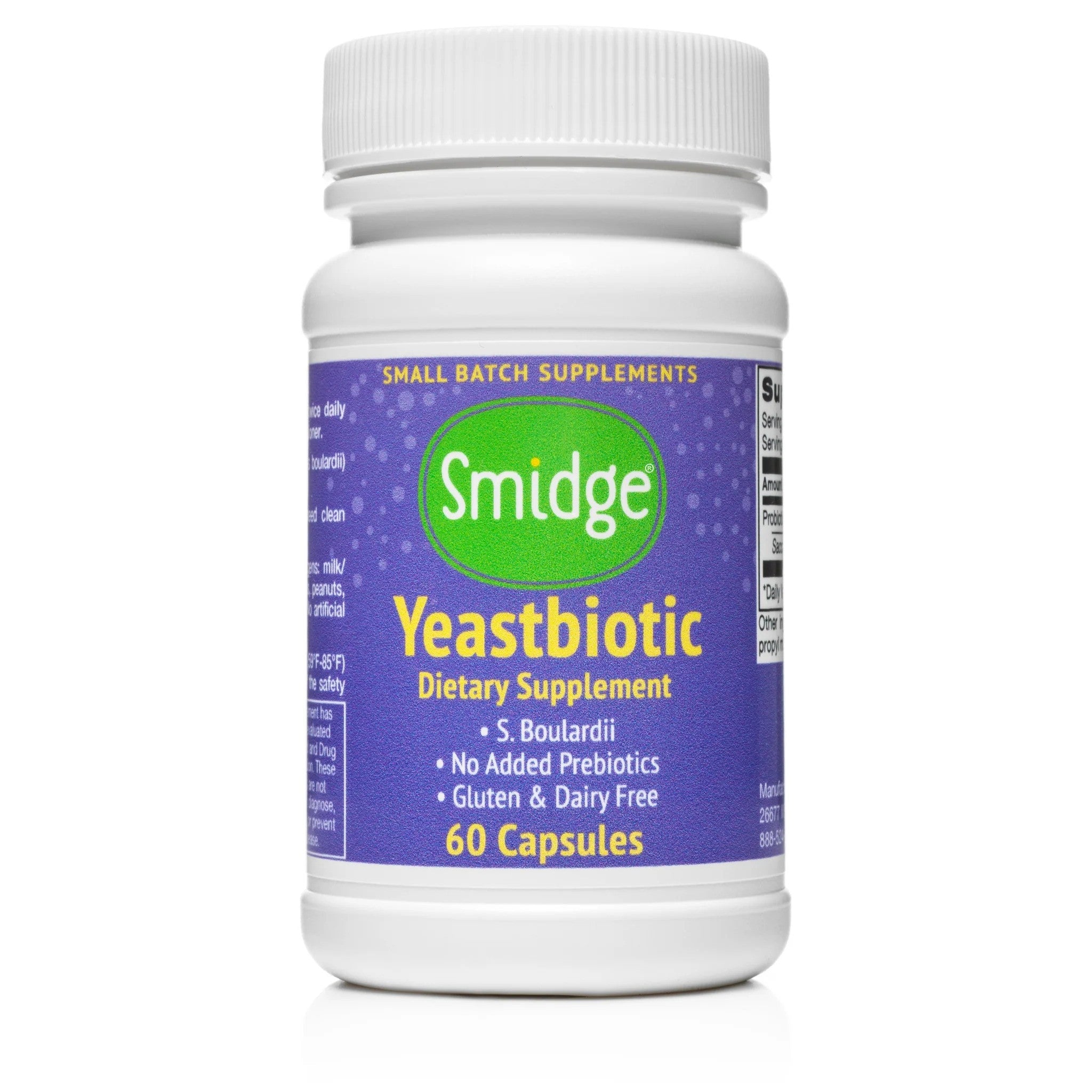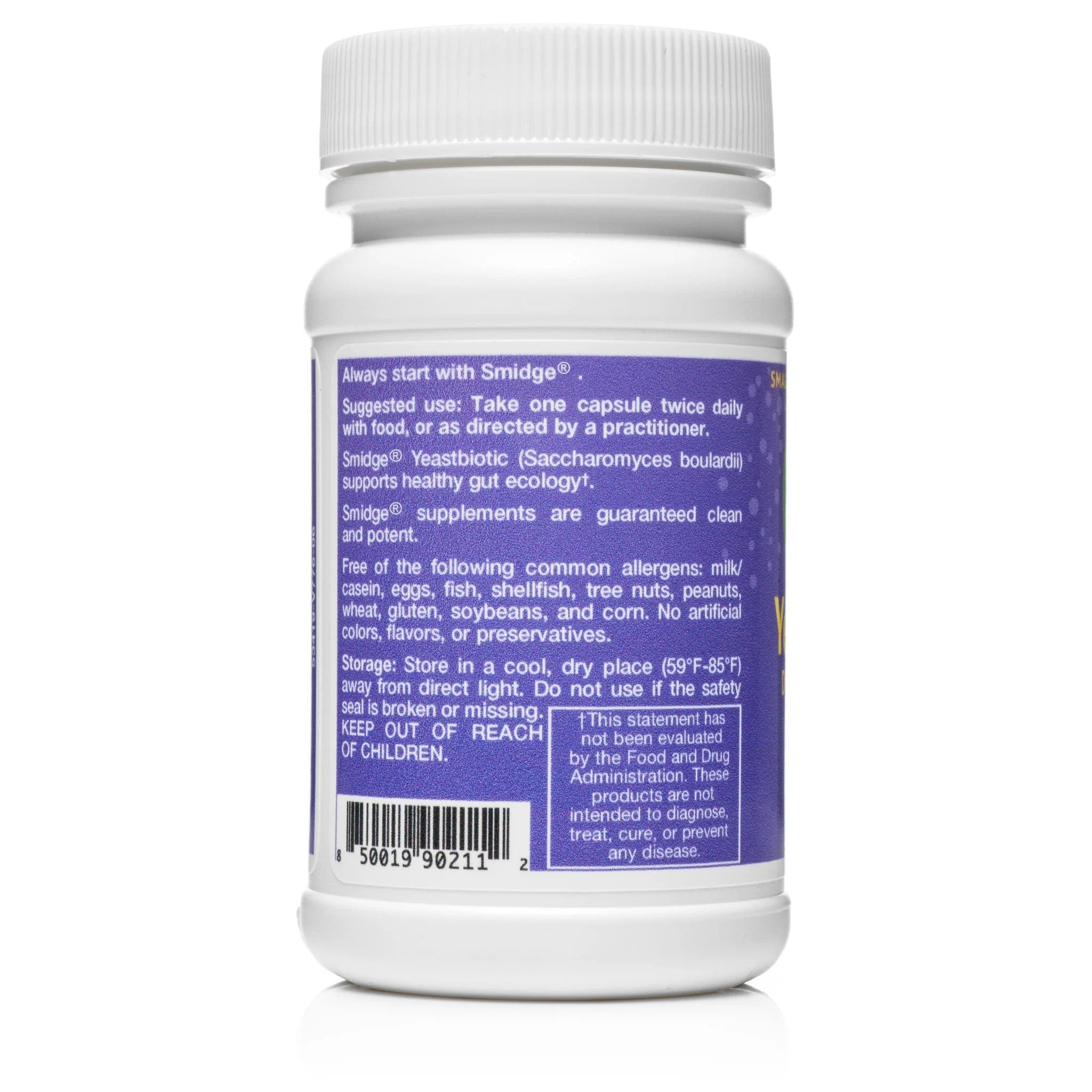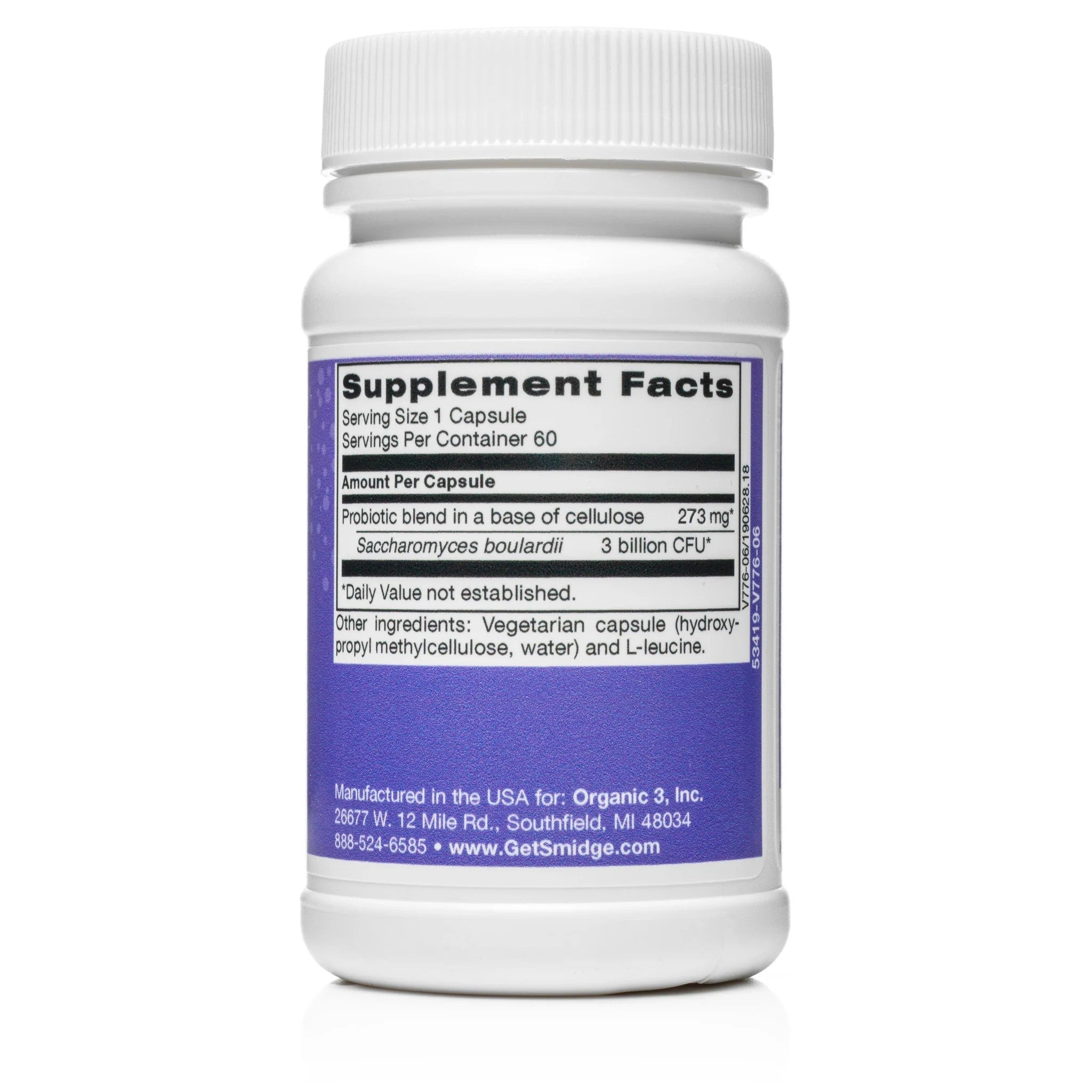


Yeastbiotic - 60 capsules
YeastBiotic - Probiotic Capsules from Smidge
Saccharomyces boulardii is a non-pathogenic and non-colonizing yeast with probiotic properties. Because it is not a bacterium, it can be used in combination with antibiotics and still remain viable. This probiotic fungus was discovered in Indochina in 1923. YeastBiotic Probiotic Capsules contain over 3 billion organisms per capsule and, other than the cellulose and L-leucine required for the capsule, contain no additives.
About YeastBiotic - Probiotic Capsules
Saccharomyces boulardii is both temperature-tolerant and acid-resistant. This yeast species is tropical in origin and was first isolated from lychees and mangosteens in 1923 by the French scientist Henri Boulard. He discovered that indigenous peoples traditionally used the peels of various tropical fruits as antidiarrheal agents and conducted research into these areas. Saccharomyces boulardii has been used for over sixty years, and three major studies have been conducted in Europe on its effects on diarrhea caused by antibiotic treatments. In the intestines, this yeast produces lactic acid, butyric acid, and B vitamins, among other nutrients. The supplement should be stored refrigerated.
About the intestinal flora
Our gut flora is a highly complex ecosystem, as unique as our fingerprints! Our gut flora, also known as the microbiome, produces essential substances including vitamins and neurotransmitters. The microbiome plays a key role in digesting food and absorbing vitamins, minerals, and other nutrients. It is therefore an extremely important ecosystem in our body. To ensure these processes run smoothly, the body collaborates with the microbes present in the intestines, including bacteria. A normal gut flora is in balance.
How do bacteria and enzymes function?
Our intestinal tract is populated by billions of microorganisms, each with its own role within our gut flora. The body collaborates with these microorganisms to ensure proper digestion. In a normal intestinal flora, these species are in balance, a balance that varies from person to person. Enzymes are capable of accelerating processes in our body, like our body's workhorses. Digestive enzymes can sometimes accelerate processes up to a trillion times! They act as catalysts in our intestinal tract, little "chemical factories" that we need to nurture.
Benefits
- Saccharomyces boulardii is a body-friendly, non-pathogenic and non-colonizing yeast with probiotic properties
- Contains 3+ billion CFUs per capsule
- Antibiotic-resistant, so may be taken at the same time as antibiotics
- Gluten and lactose free, freeze-dried
The unravelling of our intestinal flora
Although scientists agree that our gut flora is worth intense study, we still know very little about this remarkably complex "organ" in our body. Our knowledge is estimated to be just the tip of the iceberg! Not only is our gut flora complex, it is also highly dynamic and can substantively change even within a few days. We are slowly beginning to understand how bacteria communicate with each other via "quorum sensing." Bacteria throughout our bodies, including our intestinal tract, are in constant communication through this mechanism and can, among other things, sense how many of their own kind they are with, and collaborate with each other in ingenious ways. Quorum sensing remains as fascinating as it is mysterious to many researchers.
The history of probiotics
Although the term "probiotics" dates back to 1953, the principle is much older. The first traces of the use of probiotics date back to the Neolithic period, between 10,000 and 5,000 BC. At that time, herders in the Middle East stored milk in bags made of goatskin. The sun fermented the milk through lactic acid bacteria and yeasts. The importance of these discoveries only came to light much later, during the 19th century. In that century, the French chemist and biologist Louis Pasteur developed his theory that microorganisms were the cause of many diseases. This microbe theory is one of the most important discoveries in medical history and led to many new insights in the field that came to be known as microbiology. However, true probiotic science only began in Europe during the 1990s. Probiotics have been a hot research field ever since.
Content
Instructions
Ingredients
Choose options



